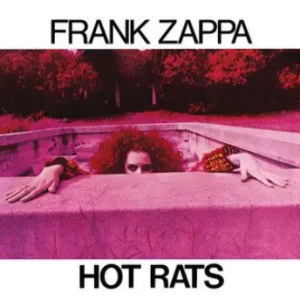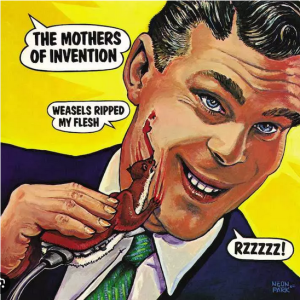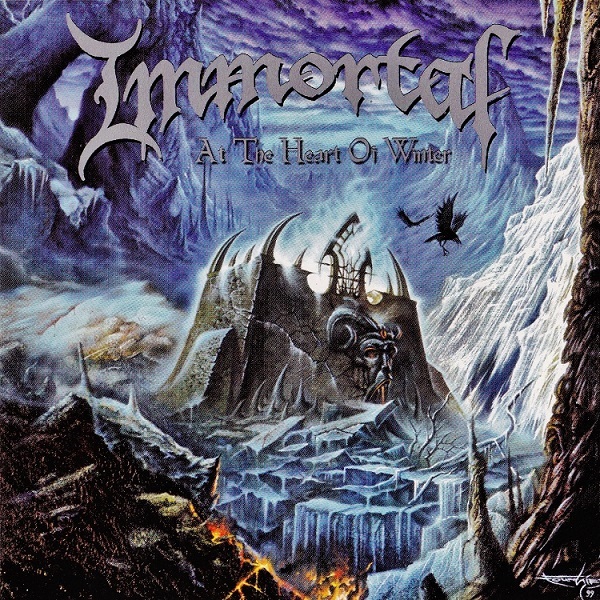You are using an out of date browser. It may not display this or other websites correctly.
You should upgrade or use an alternative browser.
You should upgrade or use an alternative browser.
Album Artwork
- Thread starter Bonyduck Campersang
- Start date
Chukchi Husky
Lone Wolf
The cover of Brain Salad Surgery was based on a work that H.R. Giger just completed when he met Keith Emerson. H.R. Giger created two variations of the work for Emerson, Lake and Palmer, including creating the band's logo. The final artwork had to be censored by another artist because the record company rejected the artwork as pornographic, that's why the lower part of the lens in the centre of the artwork is blurred.
Hygro
soundcloud.com/hygro/
I've noticed a trend in pop music increasingly the past decade of people using childhood pictures, like high school parties, for their album and single covers.
There's also that unlucky guy (then infant) suing Nirvana for using him in the Nevermind cover.I've noticed a trend in pop music increasingly the past decade of people using childhood pictures, like high school parties, for their album and single covers.
Bonyduck Campersang
Odd lookin duck
- Joined
- Dec 11, 2022
- Messages
- 4,635
Book covers are very different. They're supposed to accurately represent the content of the book (there was a great deal of fuss over Tess of the Road featuring a dragon on the cover while there was no real dragon in the story), to clearly show the title of the book, to clearly show the name of the author. The last two in some (or maybe most) cases become part of the brand identification (see most YA fantasy series, for a more classical case, see Enid Blyton's distinctive signature she insisted on having on her book jackets).
Books across the same genre tend to have very similar elements so that you can tell at a glance what sort of book it is: cozy murder mysteries*, chick-lit, penny dreadfuls, action thrillers, whimsy light-hearted, horror, high fantasy etc.
Elements of book design are generally more identifiable compared to album artwork. To my mind, the former is more comparable with 'straight' fine art; looking at a classical painting you can recognise each element, correlate it to a real-world entity or concept or approximate to it, there is no overbearing pretension of mystery, information is present straightforwardly (though the meaning may remain obscured). The album cover scene is more chaotic; anything goes, what matters is the vibes you get across.
That said, there still must be something that makes an album cover 'good'. After all, artists and labels don't just pick anything to be on their cover.
*This wasn't always the case with murder mysteries. Some of the earlier covers for Agatha's Christie's books were downright creepy, and as a child I put off reading them because I thought they would be darker compared to the other of her books which had cheerier, cozier covers.
Books across the same genre tend to have very similar elements so that you can tell at a glance what sort of book it is: cozy murder mysteries*, chick-lit, penny dreadfuls, action thrillers, whimsy light-hearted, horror, high fantasy etc.
Elements of book design are generally more identifiable compared to album artwork. To my mind, the former is more comparable with 'straight' fine art; looking at a classical painting you can recognise each element, correlate it to a real-world entity or concept or approximate to it, there is no overbearing pretension of mystery, information is present straightforwardly (though the meaning may remain obscured). The album cover scene is more chaotic; anything goes, what matters is the vibes you get across.
That said, there still must be something that makes an album cover 'good'. After all, artists and labels don't just pick anything to be on their cover.
*This wasn't always the case with murder mysteries. Some of the earlier covers for Agatha's Christie's books were downright creepy, and as a child I put off reading them because I thought they would be darker compared to the other of her books which had cheerier, cozier covers.
Bonyduck Campersang
Odd lookin duck
- Joined
- Dec 11, 2022
- Messages
- 4,635
Moff Jerjerrod
Deity

Simple. Intriguing without too much obnoxious glitz. Evocative. Are these two together? Are they enjoying themselves.
If I didn't know who "The Smiths" are/were I would probably buy this album to find out. Assuming we're talking about a period of time before the internet and celle phones.
Bonyduck Campersang
Odd lookin duck
- Joined
- Dec 11, 2022
- Messages
- 4,635
Is this the world's most annoying album cover?

I've been trying to understand what makes a 'good' album cover: what art/design rules does it follow or/and what makes an album cover popular?
For the first question I can't find any answer. A look on Canva discovers some very good designs, and you can see all of them follow some sort of compositional rules (e.g. text contrast with imagery), but most album artwork is so widely different from one another that there doesn't seem to be any one uniting theme.
For the second question, it seems that the popularity or iconicness of an album cover is heavily dependent on the popularity of the album and the band. I don't think the Beatles could have gotten away with their plain white album cover for The Beatles (1968) had they been a small-time band.
I am not any closer to finding an answer to my question. What makes an album cover good? What is the thought process behind someone choosing a certain artwork for their album, and for someone looking around for an album to buy/listen to?
Bonyduck Campersang
Odd lookin duck
- Joined
- Dec 11, 2022
- Messages
- 4,635
Thinking about this^
Bonyduck Campersang
Odd lookin duck
- Joined
- Dec 11, 2022
- Messages
- 4,635
Gori the Grey
The Poster
- Joined
- Jan 5, 2009
- Messages
- 13,207
Comrade Ceasefire
Simmer slowly
I'll just add a few of the first vinyl albums I owned.
My favourite was Ogdens' Nut Gone Flake by the Small Faces (1968). It opened up into 4 connected circular sections and a poster of the band.The others will probably be known to most of you.
The last one is not a copy, it's a tribute I designed during Covid for a Tshirt.






My favourite was Ogdens' Nut Gone Flake by the Small Faces (1968). It opened up into 4 connected circular sections and a poster of the band.The others will probably be known to most of you.
The last one is not a copy, it's a tribute I designed during Covid for a Tshirt.




Last edited:
Comrade Ceasefire
Simmer slowly
So many I can remember.

Last edited:
Comrade Ceasefire
Simmer slowly
Marginally better than the White Album, and a 1988 album by friends of mine from Adelaide...90s rock/alternative album covers tended to be on the cheap side.
Consider this, by Nirvana:
View attachment 688203
warpus
Sommerswerd asked me to change this
IMO one of the main considerations when it comes to an album cover is Branding
Whatever image or piece of art that is chosen as the album cover will be forever associated with the music and the ideas and vibes that the musicians were trying to get across at the time. Whether the listener really understands how the album cover ties in with the music or not, if there even is such a connection, in the end the album cover ends up representing the album and the music on it from a branding standpoint. So IMO it makes sense for the musicians to pick something that makes sense to them, since they are the ones who presumably were the creative forces behind the writing of the music and lyrics.. so they might as well get to decide what image will represent the music and the ideas the musicians were trying to get across on the album.
Branding can serve multiple purposes.. It can be functional, in that it can tell the audience what kind of music to expect. If the album cover has trumpets on it, the listener would probably expect to hear trumpet sounds in many of the songs. If it's a bunch of mean looking guys with long hair who are wearing leather and standing over the carcass of a dead animal, the message being sent is that the music might appeal to those who enjoy specific subgenres of metal. Those who are a part of that subculture would be able to look at that album cover and understand that this is the music of their people. Those who prefer to listen to polka music and dislike black metal would be able to look at that album cover and very quickly decide to move on to something else. So, I see many album covers serving functional purposes, from a branding standpoint. They are an attempt to drive the right kind of people to the music, warning others to stay away.
Sometimes I feel that the album cover is more about the musician rather than the specific album at hand.

Some album covers attempt to tie hopefully iconic imagery to the music. If the music is iconic too then that can end up working quite well.

In the end this is.. well, art. So there are many reasons and justifications for why someone used this and that as an album cover, and the audience can have their own opinions and points of view on this as well.. The same album cover can mean different things to different people. But in the end album covers remind us of the music that they are associated with, whatever interpretations of them we might all have in our minds or what interpretations of them the original artists might have had when they picked them.
Whatever image or piece of art that is chosen as the album cover will be forever associated with the music and the ideas and vibes that the musicians were trying to get across at the time. Whether the listener really understands how the album cover ties in with the music or not, if there even is such a connection, in the end the album cover ends up representing the album and the music on it from a branding standpoint. So IMO it makes sense for the musicians to pick something that makes sense to them, since they are the ones who presumably were the creative forces behind the writing of the music and lyrics.. so they might as well get to decide what image will represent the music and the ideas the musicians were trying to get across on the album.
Branding can serve multiple purposes.. It can be functional, in that it can tell the audience what kind of music to expect. If the album cover has trumpets on it, the listener would probably expect to hear trumpet sounds in many of the songs. If it's a bunch of mean looking guys with long hair who are wearing leather and standing over the carcass of a dead animal, the message being sent is that the music might appeal to those who enjoy specific subgenres of metal. Those who are a part of that subculture would be able to look at that album cover and understand that this is the music of their people. Those who prefer to listen to polka music and dislike black metal would be able to look at that album cover and very quickly decide to move on to something else. So, I see many album covers serving functional purposes, from a branding standpoint. They are an attempt to drive the right kind of people to the music, warning others to stay away.
Sometimes I feel that the album cover is more about the musician rather than the specific album at hand.

Some album covers attempt to tie hopefully iconic imagery to the music. If the music is iconic too then that can end up working quite well.

In the end this is.. well, art. So there are many reasons and justifications for why someone used this and that as an album cover, and the audience can have their own opinions and points of view on this as well.. The same album cover can mean different things to different people. But in the end album covers remind us of the music that they are associated with, whatever interpretations of them we might all have in our minds or what interpretations of them the original artists might have had when they picked them.
Comrade Ceasefire
Simmer slowly
OMG, you are going to regret that statement for the rest of your life!Book covers are very different. They're supposed to accurately represent the content of the book
Good Show Sir - Only the worst Sci-fi/Fantasy book covers
Good Show Sir! Awful, terrible and simply the worst Science Fiction & Fantasy book covers for your enjoyment! Send us your terrible covers so we can document the carnage to our eyes!
Similar threads
- Poll
- Replies
- 4
- Views
- 650

